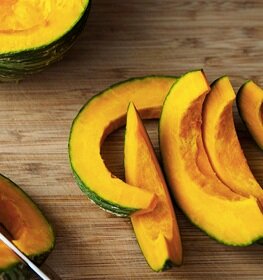INGREDIENTS
1/4 cup extra virgin olive oil
2 to 3 large leeks, thinly sliced
3 to 4 cloves of garlic, sliced
3 to 4 cups greens, thinly sliced and then chopped up into small short pieces (Here, you can consider using up all the limp celery you didn’t get to in the last weeks, leaves and all! Kale, collards, spinach, turnip or beet greens, chard all will work. Mix and match. This is your chance to clear out the old greens to make space for the new!
2 to 3 potatoes, sliced into 1-inch slices and then cut into half moons (No, I don’t peel my potatoes! But I do make sure they’re organic. If you don’t have access to organic potatoes, maybe it is worth the trouble of peeling them. Potatoes are amongst the heaviest-pesticide-carrying crop in the industrialized agriculture fields.)
salt and pepper to taste
2 to 3 bay leaves
1 to 2 tsp thyme
8 to 10 cups veggie broth (or chicken broth if that’s your jam) If I’m using bouillon cubes, I will use 2 cubes Edward & Sons Not-Chick’n and 2 cubes Garden Veggie.
10 to 12 mushrooms (or more!), sliced in fourths (This is about what you’d find in an 8oz box at the grocery store)
fresh parsley leaves and/or microgreens for garnish
INSTRUCTIONS
Place mushrooms in a single layer on a baking sheet lined with parchment paper. Drizzle with olive oil, sprinkle with salt and pepper and bake in oven at 400 for about 10 minutes, or until beginning brown, sizzle and crisp a little bit.
Heat oil in pan and saute sliced leeks sprinkled with salt and pepper on medium-high heat for about 5 minutes. Add garlic (and celery, if you’re going with that!) and stir fry for a couple more minutes.
In a pot, add the veggie broth or water and bouillon cubes, bay leaves, thyme, potatoes, greens and your sauteed leek and garlic goodness. Bring to a boil, then cover with a lid and simmer until potatoes are cooked through. Turn off heat when ready.
Now, the quick and easy way to finish up is to get your potato masher (metal please! Don’t stick plastic into your boiling liquid!) and semi-mash your potatoes directly in the soup pot. This leaves you with a soupy/chunky mix that I love to serve topped with croutons and pan-fried veggie italian sausage. Although, doubling the mushrooms is healthier and often filling enough for me to skip the sausage.
Alternatively, and perhaps, more traditionally for a potato-leek soup, you can blend it smooth. An immersion blender works great and you can better control how smooth you want the soup to be. The last method I would suggest, if you love your soup smooth and creamy, is to let it cool a bit, then transfer into your blender. The big blender is faster than the immersion blender, gets it smoother, but takes more patience waiting for the soup to cool enough to transfer to the blender, and then, of course, there’s more clean up because you’re stuck washing the blender. Blend and return to your pot (reheat if necessary) and serve topped with your garnish and mushrooms. The upside of blending to me, is that the kids tend to eat more greens this way. Can’t pick them out if it’s all blended up!





